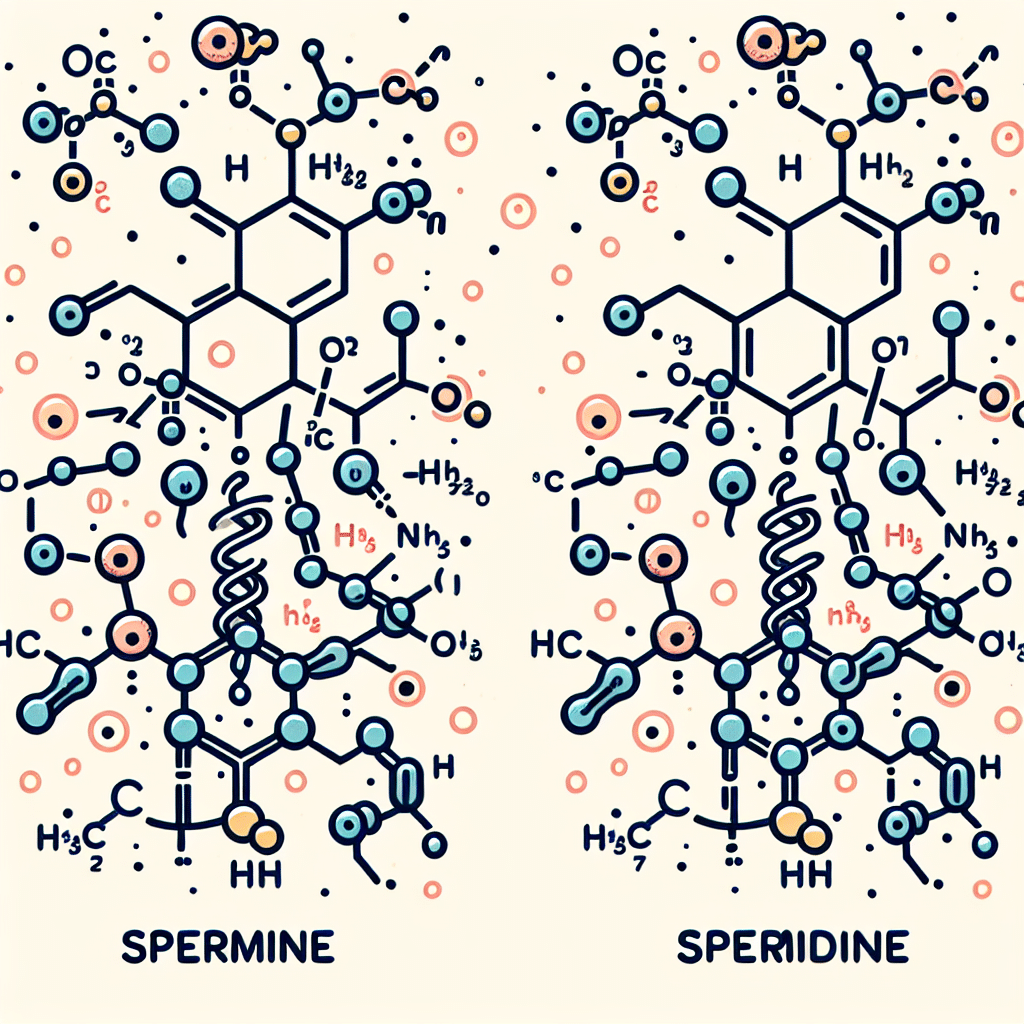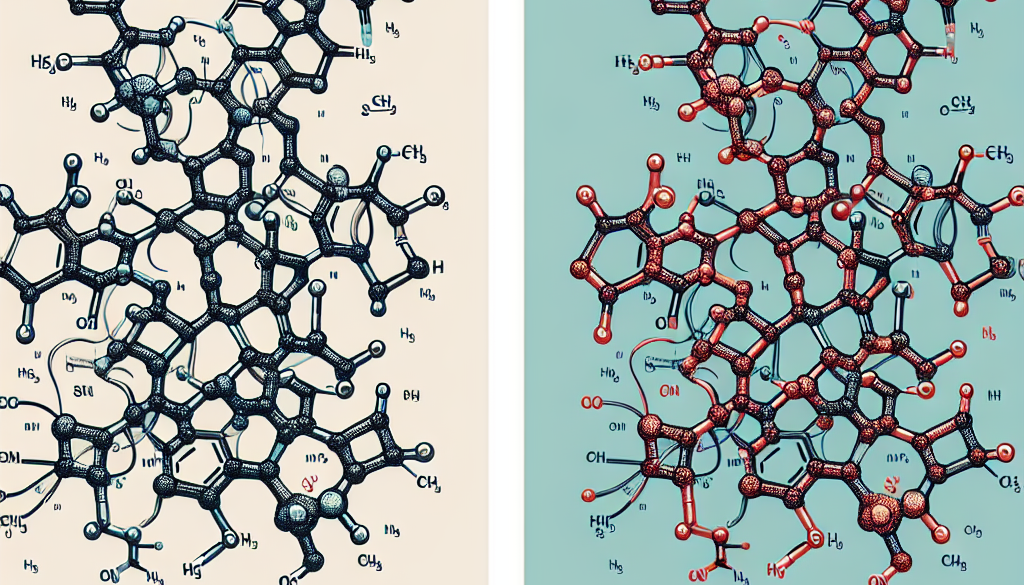Spermine Spermidine: Key Differences
-
Table of Contents
- Spermine vs. Spermidine: Exploring Key Differences and Benefits
- Introduction to Polyamines: Spermine and Spermidine
- Structural Differences Between Spermine and Spermidine
- Biological Functions and Roles
- Health Implications and Therapeutic Potential
- Case Studies and Research Findings
- Conclusion: Key Takeaways on Spermine and Spermidine
- Enhance Your Health with ETprotein’s Premium Protein Products
Spermine vs. Spermidine: Exploring Key Differences and Benefits

Understanding the nuances between spermine and spermidine is essential for researchers, health professionals, and anyone interested in the intricate world of cellular biology and health. These naturally occurring polyamines play crucial roles in various biological processes, and while they share similarities, their differences are equally significant. This article delves into the key distinctions between spermine and spermidine, their biological functions, health implications, and potential therapeutic applications.
Introduction to Polyamines: Spermine and Spermidine
Polyamines are organic compounds that are integral to cell growth, proliferation, and differentiation. Among the most studied polyamines are spermine and spermidine, which are found in all eukaryotic cells. These molecules are involved in a myriad of cellular functions, including DNA stabilization, gene expression, and modulation of enzyme activity. Despite their structural similarities, spermine and spermidine have distinct roles and effects within the body.
Structural Differences Between Spermine and Spermidine
The primary structural difference between spermine and spermidine lies in their molecular composition. Spermidine is a triamine, containing two amino groups and one imino group, whereas spermine is a tetraamine, with four amino groups. This additional amino group in spermine allows for more binding sites, which can influence its interaction with various cellular components.
Biological Functions and Roles
Both spermine and spermidine are vital for cellular homeostasis, but they contribute to different aspects of cellular function:
- Cell Growth and Proliferation: Spermidine has been shown to promote autophagy, a process that helps cells recycle components and maintain cellular health. Spermine, on the other hand, is more closely associated with cell growth and the stabilization of DNA and RNA structures.
- Antioxidant Properties: Spermine possesses potent antioxidant properties, protecting cells from oxidative stress and damage. Spermidine also exhibits antioxidant effects, though to a lesser extent.
- Regulation of Ion Channels: Spermine can modulate the activity of ion channels, influencing cellular signaling and neurotransmission. Spermidine’s role in ion channel regulation is less pronounced.
Health Implications and Therapeutic Potential
Research has uncovered various health benefits associated with spermine and spermidine, highlighting their potential in disease prevention and treatment:
- Longevity: Spermidine has been linked to increased lifespan in several model organisms, including yeast, worms, flies, and mice. Its ability to induce autophagy is believed to be a key factor in its anti-aging effects.
- Cardiovascular Health: Both spermine and spermidine have been associated with reduced risk of cardiovascular disease. They may help lower blood pressure and improve endothelial function.
- Cancer: Studies suggest that spermidine may have anti-cancer properties, potentially inhibiting the growth of certain types of cancer cells. Spermine’s role in cancer is more complex, as it can both support and suppress tumor growth depending on the context.
- Neuroprotection: Spermine’s ability to regulate ion channels may offer neuroprotective benefits, potentially aiding in the treatment of neurological disorders such as Alzheimer’s disease.
Case Studies and Research Findings
Several studies have highlighted the importance of spermine and spermidine in health and disease. For instance, research has shown that dietary intake of spermidine-rich foods, such as aged cheese, mushrooms, and whole grains, correlates with reduced mortality and improved cardiovascular health. Similarly, spermine levels have been studied in relation to cognitive function, with higher levels being associated with better memory performance in older adults.
Conclusion: Key Takeaways on Spermine and Spermidine
In summary, spermine and spermidine are critical polyamines with distinct structural properties and biological roles. While both contribute to cellular health and have therapeutic potential, spermidine is particularly notable for its anti-aging and cardiovascular benefits, whereas spermine is recognized for its antioxidant properties and influence on cell growth. Understanding these differences is crucial for harnessing their potential in health and medicine.
Enhance Your Health with ETprotein’s Premium Protein Products
If you’re looking to incorporate high-quality protein into your diet, ETprotein offers a range of organic bulk vegan proteins that can complement your health regimen. Their products, including Organic rice protein, pea protein, and various seed proteins, are non-GMO, allergen-free, and characterized by a neutral taste. Additionally, ETprotein provides L-(+)-Ergothioneine (EGT) in various grades, suitable for nutraceutical, pharmaceutical, and cosmetic applications. Explore ETprotein’s offerings to find the perfect addition to your health-focused lifestyle.
About ETprotein:
ETprotein, a reputable protein and L-(+)-Ergothioneine (EGT) Chinese factory manufacturer and supplier, is renowned for producing, stocking, exporting, and delivering the highest quality organic bulk vegan proteins and L-(+)-Ergothioneine. They include Organic rice protein, clear rice protein, pea protein, clear pea protein, watermelon seed protein, pumpkin seed protein, sunflower seed protein, mung bean protein, peanut protein, and L-(+)-Ergothioneine EGT Pharmaceutical grade, L-(+)-Ergothioneine EGT food grade, L-(+)-Ergothioneine EGT cosmetic grade, L-(+)-Ergothioneine EGT reference grade and L-(+)-Ergothioneine EGT standard. Their offerings, characterized by a neutral taste, non-GMO, allergen-free attributes, with L-(+)-Ergothioneine purity over 98%, 99%, cater to a diverse range of industries. They serve nutraceutical, pharmaceutical, cosmeceutical, veterinary, as well as food and beverage finished product distributors, traders, and manufacturers across Europe, USA, Canada, Australia, Thailand, Japan, Korea, Brazil, and Chile, among others.
ETprotein specialization includes exporting and delivering tailor-made protein powder and finished nutritional supplements. Their extensive product range covers sectors like Food and Beverage, Sports Nutrition, Weight Management, Dietary Supplements, Health and Wellness Products, and Infant Formula, ensuring comprehensive solutions to meet all your protein needs.
As a trusted company by leading global food and beverage brands and Fortune 500 companies, ETprotein reinforces China’s reputation in the global arena. For more information or to sample their products, please contact them and email sales(at)ETprotein.com today.














